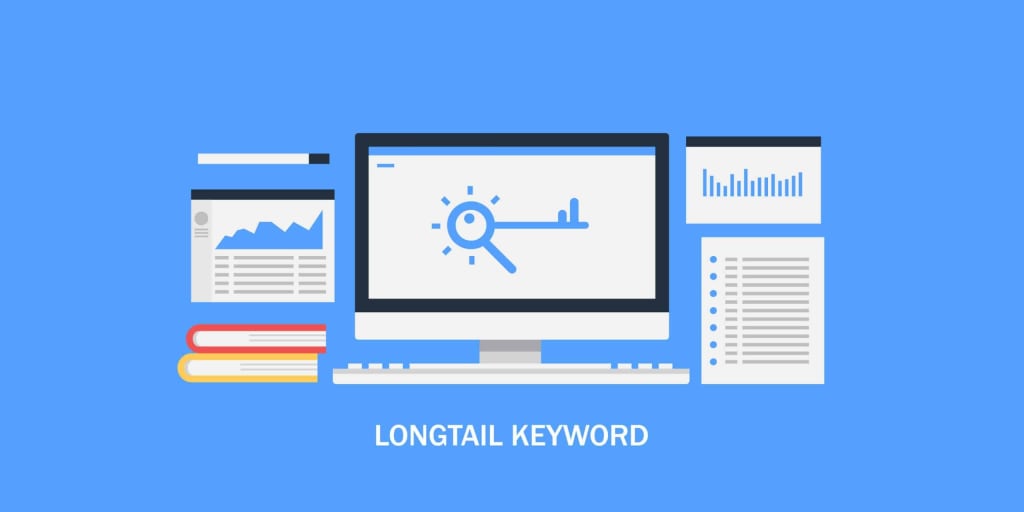The Impact of Long-Tail Keywords on SEO and How to Target them Effectively
Long-Tail Keywords on SEO

In the world of digital marketing, SEO plays a vital role in driving organic traffic to websites. Traditional keyword research often focuses on high-volume, short-tail keywords that are highly competitive. However, long-tail keywords offer unique advantages that can enhance SEO efforts. By understanding the impact of long-tail keywords and employing effective targeting strategies, businesses can improve their visibility, attract highly targeted traffic, and ultimately increase conversions.
1. Understanding Long-Tail Keywords
Long-tail keywords are longer and more specific keyword phrases that target a niche audience. Unlike short-tail keywords, which are broad and often highly competitive, long-tail keywords are more focused and reflect the specific intent of users. For example, "best digital marketing service" and "organic SEO service" are examples of long-tail keywords that indicate a specific need or interest.
Long-tail keywords often have lower search volumes individually, but collectively they can account for a significant portion of organic search traffic. Additionally, long-tail keywords tend to have higher conversion rates due to their specificity. Users searching for long-tail keywords are often further along the buying process and more likely to convert.
2. The Impact of Long-Tail Keywords on SEO
Long-tail keywords have several positive impacts on SEO:
a. Reduced Competition:
Short-tail keywords are highly competitive, making it difficult for new or small businesses to rank well. Long-tail keywords, on the other hand, have less competition, making it easier to achieve higher rankings and visibility in search engine results.
b. Improved Relevance:
Long-tail keywords allow you to target a specific audience with specific needs. By incorporating long-tail keywords into your content, you can provide highly relevant information to users, resulting in increased user satisfaction and improved search engine rankings.
c. Increased Conversion Potential:
Long-tail keywords often indicate a higher level of intent and a clearer need. Users searching for specific long-tail keywords are more likely to convert into customers or take the desired action. By optimizing your content for these keywords, you can attract highly targeted traffic and increase your conversion rates.
d. Enhanced User Experience:
By targeting long-tail keywords, you can create content that directly addresses the specific needs and interests of your audience. This personalized approach enhances the overall user experience, leading to longer time spent on your website, lower bounce rates, and higher engagement metrics—all of which positively impact SEO.
3. How to Target Long-Tail Keywords Effectively
To effectively target long-tail keywords, follow these strategies:
a. Conduct Thorough Keyword Research:
Use keyword research tools such as Google Keyword Planner, SEMrush, or Ahrefs to identify relevant long-tail keywords in your industry. Look for keywords that have a moderate search volume and align with your target audience's specific needs and interests.
b. Create High-Quality, Relevant Content:
Develop content that directly addresses the needs of users searching for long-tail keywords. Craft informative blog posts, articles, or landing pages that provide comprehensive answers or solutions to specific queries. Focus on providing value and establishing your expertise in the niche.
c. Optimize On-Page Elements:
Ensure that your long-tail keywords are strategically placed in your page titles, headings, meta descriptions, and throughout the content. However, avoid keyword stuffing and keep the phrase flowing naturally. Remember that the primary goal is to provide valuable content to users.
d. Leverage User Intent:
Take into account the intent behind the long-tail keywords you're targeting. Are users looking for information, looking for a specific product or service, or ready to buy? Tailor your content to align with the user's intent and guide them towards the desired action.
e. Monitor and Refine:
Monitor the success of your long-tail keywords on a regular basis. Analyze metrics such as search rankings, organic traffic, and conversion rates. Based on the data, make necessary adjustments to your content and optimization strategies to improve performance continually.
Conclusion
Long-tail keywords, including "organic SEO service," offer a valuable opportunity to enhance SEO efforts and attract highly targeted organic traffic. By understanding the impact of long-tail keywords on SEO and implementing effective targeting strategies, businesses can improve their visibility, relevance, and conversion rates. Remember to conduct thorough keyword research, create high-quality content, optimize on-page elements, leverage user intent, and continuously monitor and refine your approach. By incorporating long-tail keywords, such as "organic SEO service," into your SEO strategy, you can achieve better search engine rankings, increase visibility, and drive meaningful results.
FAQs
Q1. Are long-tail keywords more effective than short-tail keywords in SEO?
Long-tail keywords offer specific advantages in SEO. While short-tail keywords have higher search volumes, they are also highly competitive. Long-tail keywords have less competition, better relevance, and higher conversion potential. Both short-tail and long-tail keywords have their place in an effective SEO strategy, and it's often beneficial to target a combination of both.
Q2. How can long-tail keywords help smaller businesses or new websites with limited resources?
Long-tail keywords provide an opportunity for smaller businesses or new websites to compete in the search engine rankings. By targeting niche, less competitive keywords, these businesses can improve their visibility, attract relevant traffic, and establish their expertise within specific niches or industries.
Q3. Can long-tail keywords be used in all types of content?
Yes, long-tail keywords can be incorporated into various types of content, including blog posts, articles, product descriptions, and landing pages. They can be used to address specific queries, provide detailed information, or offer solutions to users' specific needs.
Q4. How often should I update my long-tail keyword strategy?
Keyword patterns and user search behavior are subject to change. It's essential to periodically review and update your long-tail keyword strategy to stay relevant. Regularly conduct keyword research, monitor performance metrics, and adapt your strategy based on changing user needs and search trends.
Q5. Is it necessary to hire the best digital marketing service or organic SEO service to target long-tail keywords effectively?
While it's possible to target long-tail keywords without professional assistance, partnering with the best digital marketing service or organic SEO service can provide expertise and guidance. These professionals have in-depth knowledge of SEO strategies, keyword research tools, and content optimization techniques, ensuring that you target long-tail keywords effectively and achieve the best possible results.
About the Creator
Vaibhav Pandya
Vaibhav Pandya is the Chief Operating Officer (COO) and Senior Contributing Editor at IndyLogix - Digital Marketing Agency, where he has spent 9+ years growing the organization and establishing it as a credible market leader.






Comments
There are no comments for this story
Be the first to respond and start the conversation.